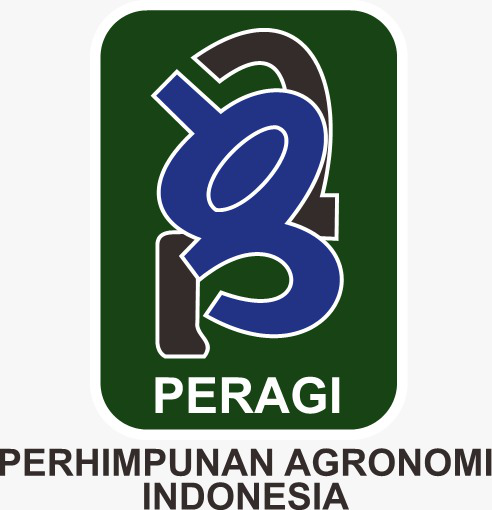Characterization And Genetic Relationship of Several Tomato (Solanum lycopersicum L.) Genotypes from Various Regions
Abstract
The research aims to obtain information about the morphological characters and genetic relationships of several tomato genotypes from various regions. The study was conducted from May to October 2023 at the Experimental Garden and Plant Breeding Laboratory, Faculty of Agriculture, University of Riau. The research used a randomized block design (RBD) consisting of eight genotypes and four repeats, and 32 experimental units were obtained. The observations were made to observe some qualitative characters. Qualitative data were analyzed using principal component analysis and cluster analysis to see genetic relationships. The results showed that the Magelang genotype (T27) had a high average plant fruit weight of 619.74 g, the Pane tongah (T24) had an average thick fruit flesh of 6.05 mm, the Silimakuta (T22) had an average large fruit size of 63.28 g. In contrast, the Purba (T25) had an average number of large planting fruits of 15.41 pieces. Grouping eight tomato genotypes based on clustering of MC1 and MC2 and cutting the dendrogram at a 90% similarity rate resulted in six groups. Group One consists of three genotypes, specifically Silimakuta (T22), Alahan Panjang (T26), and Magelang (T27). Group Two has Raya (T23), Group Three has Purba (T25), Group Four has Pane tongah (T24), group five has Servo F1 and group six has Ratna. The closest kinship based on the smallest euclidiean distance value is the Silimakuta (T22) and Alahan panjang (T26), with a value of 19.44. The genotypes with the farthest similarity are Raya (T23) and Purba (T25) because they have a 46.24 genetic distanceDownloads
References
Afuape, S.O., P.I. Okocha, and D. Njoku. 2011. Multivariate assessment of the agromorphological variability and yield components among sweet potato (Ipomoea batatas (L.) Lam) landraces. African J. Plant Sci. 5(2): 123–132.
Badan Pusat Statistik. 2022. Produksi Tanaman Sayuran.
Bhartaya, A., J.P. Aditya, G. Singh, A. Gupta, P.K. Agarwal, et al. 2011. Assessment of genetic diversity in indigenous and exotic collections of black soybean (Glycine max (L.) Merrill). SABRAO J. Breed. 43(1): 81–90.
Daryanto, A., M.R.A. Istiqlal, U. Kalsum, and R. Kurniasih. 2020. Penampilan Karakter Hortikultura Beberapa Varietas Tomat Hibrida di Rumah Kaca Dataran Rendah. J. Agron. Indones. (Indonesian J. Agron. 48(2): 157–164.
Deviona, M. Syukur, E. Zuhry, Armaini, Yunandra, F. Riska 2023. Principal Component and Cluster Analyses of 20 Genotypes of Chilli (Capsicum sp.) Planted on Peatlands. Prosiding Seminar on International Conference on Sustainable Agriculture, Ecology, and Earth Science. p. 1228
Ganeva, D.G., Y. Stanislava, T. Grozeva, Galina, and Pevicharova. 2018. Evaluation of production and productivity compounds in tomato accessions grown under elevated temperature and reduced irrigation. J. Int. Sci. Publ. 6: 99–110.
Maskar, A.N., R. Boy, and I.G.P. Sarasutha. 2005. Analisis finansial budidaya tomat di dataran rendah Sulawesi Tengah. J. Pengkaj. dan Pengemb. Teknol. Pertan. 8(3): 394–404.
Mattjik, A.A., and I.M. Sumertajaya. 2011. Sidik Peubah Ganda dengan Menggunakan SAS.
Maxisella, Y., R. D, and A. Karuniawan. 2008. Penampilan fenotipik, variabilitas dan hubungan kekeragaman 39 genotip genus vigna dan phaseolus berdasarkan sifat morfologi dan komponen hasil. zuriat 19(2): 179–196.
Painting, K.A., M.C. Perry, R.A. Denning, and W.G. Ayad. 1995. Guidebook for genetic resources documentation.International Plant Genetic Resources Institute.
Rahmadani, P.D., A. Budiman, S. Daryanto, and Widiyanto. 2021. Evaluasi Keragaan Dan Karakter Komponen Hasil Tanaman Tomat (Solanum Lycopersicum L.) Generasi F6 Di Rumah Kaca Dataran Rendah. J. Pertan. presisi 5(2): 95–108.
Ramadhan, A.M., D. Saptadi, and I. Yulianah. 2016. karakterisasi morfologi dan hubungan kekerabatan 28 genotip tanaman tomat (Lycopersicum esculentum Mill). J. Produksi Tanam.
Reddy, K., S. Jain, A. Kumar, G. Krishnan, A. Singh, Z. Hussain. 2017. Morphological markers for identification of hybrids and their parental lines in tomato (Solanum lycopersicum L.). indian J. agri sci 87: 694–699.
Santoso, S. 2004. SPSS Statistik Multivariat.
Saputra, H.E., M. Syukur, and S.I. Aisyah. 2014. Pendugaan Daya Gabung dan Heritabilitas Komponen Hasil Tomat pada Persilangan Dialel Penuh. J. Agron. Indones. (Indonesian J. Agron. 2(3): 203–209.
Senior, M.L., J.P. Murphy, M.M. Goodman, and C.W. Stuber. 1998. Utility of SSR for Determining Genetic Similarities and Relationship In Maize Using Agarose Gel System. Crop Sci 38: 1088–1098.
Yunianti, R., S. Sartrosumarjo, S. Sujiprihati, M. Surahman, and S.H. Hidayat. 2007. Ketahanan 22 genotipe cabai (Capsicum spp.) terhadap Phytophthora capsici Leonian dan keragaman genetiknya. Bul. Agron. 35(2): 103–111
Copyright (c) 2024 Fikri Rahmadian, Yunandra Yunandra, Elza Zuhry, Irfandri Irfandri, Rachmad Saputra, Niskan Walid Masruri, Yohana Aprilita Br. Hutabarat, Natalia Yosephine Simanjuntak, Eka Destiani

This work is licensed under a Creative Commons Attribution 4.0 International License.
Authors who publish with Jurnal Agronomi Tanaman Tropika (JUATIKA) agree to the following terms:
Authors retain copyright and grant the Jurnal Agronomi Tanaman Tropika (JUATIKA) right of first publication with the work simultaneously licensed under a Creative Commons Attribution License (CC BY 4.0) that allows others to share (copy and redistribute the material in any medium or format) and adapt (remix, transform, and build upon the material for any purpose, even commercially) with an acknowledgment of the work's authorship and initial publication in Jurnal Agronomi Tanaman Tropika (JUATIKA).
Authors are able to enter into separate, additional contractual arrangements for the non-exclusive distribution of the journal's published version of the work (e.g., post it to an institutional repository or publish it in a book), with an acknowledgment of its initial publication in Jurnal Agronomi Tanaman Tropika (JUATIKA). Authors are permitted and encouraged to post their work online (e.g., in institutional repositories or on their website) prior to and during the submission process, as it can lead to productive exchanges, as well as earlier and greater citation of published work.







 More Information
More Information



